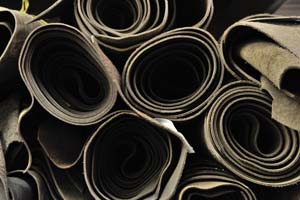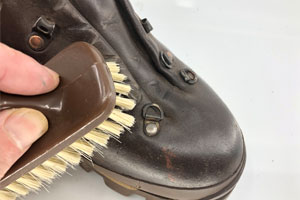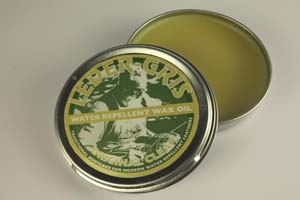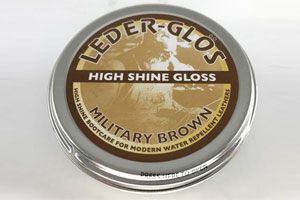History of Leder-Gris

“In the early nineties I started to become unhappy with the water absorbency of the leather we were using on our gamekeeper boots - we were using a WR100 leather (when WR100 leather is flexed in water for 100 minutes and it must not absorb more than 6% of its weight in moisture). We had noted that after 6 months the leather we were using in our gamekeeper boots was absorbing 14% - over twice as much.
“I took the leather and boots to the Pittards Tannery laboratory in Leeds and they quickly identified the problem - it was not the leather - but the leather treatment!!!
“The gamekeepers had been using a bootcare product which contained a high amount of hydro carbon based solvents (i.e. coal/oil based waxes with paraffin’s, white spirits etc.).

“These bootcare products had been developed many years previously for leathers tanned in the old way, however, the new water repellent boot leathers were different - and although these bootcare products were acceptable on some leathers - they had a tendency to neutralise the water repellent components tanned into the more modern WR100/Anfibio/Hydro type leathers.
“At that time in Leicester there was a bootcare company - Allen & Caswell - and with them I worked on the problem of finding a wax oil that would be compatible with modern leather. The result was Leder-Gris.
“However, this story has a sad ending... we had always purchased our leather from the Pittards/Miers tannery in Leeds (Yorkshire). The company was a PLC, and as the new millennium property boom began to get up a 'full head of steam' the land the tannery was on became 'apparently' worth more than the tannery itself,and so the last British Tannery making top quality water repellent (WR100) boot leather was shut down. It was a sad day for them and a sad day for us.

“The tannery had generations of experience and a really good leather testing Laboratory. It exported its WR100 leather all over the world. I think the recent financial crisis and recession has shown how short sighted we were in England when we closed down key exporting companies such as the Pittards tannery in Leeds.
“Nowadays our standard Leder-Gris wax is made for us by Grangers of England. Some years ago I realised that in more extreme conditions a different type of bootcare was necessary to complement our existing Leder-Gris wax. Soldiers who get their boots wet every day during training exercises and gamekeepers required a treatment with a higher oil content, so I developed Leder-Gris Xtreme. Leder-Gris Xtreme is a restorative bootcare product - it is not intended for regular use, but if boots become extremely wet, and if the leather shows signs of hardening - Leder-Gris Xtreme will help replace some of the oils, to restore some suppleness to the leather. Both products are tried and tested in all conditions - traditional bootcare for modern leathers.

"In 2012 Altberg were awarded the contract to supply the UK army with their combat boots. Following the issue of the first boots, many soldiers asked if we would make a Leder-Gris product with a higher level of shine for parade and barracks use – so we took the Leder Gris Original formula and we increased the level of waxes and colour pigments, at the same time we reduced the oil content. The result was Leder Glös, which will give boots a high shine finish when used regularly – however for more adverse wet conditions, Leder-Gris remains the best product for waterproofing and keeping the natural oils in the leather."
So when we say “we recommend Leder-Gris products” it is not a gimmick. We recommend it because if used correctly and regularly, Leder-Gris, Leder-Glӧs or Leder-Bok will help sustain the water repellency or surface shine of leather for a longer period of time.